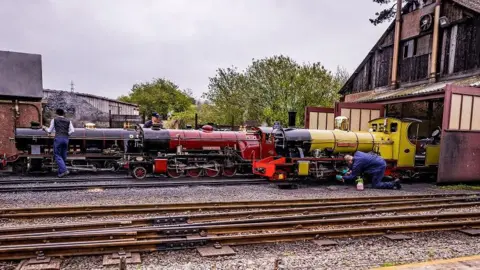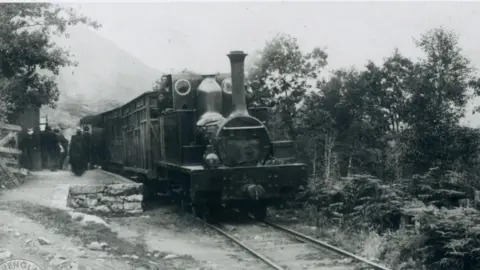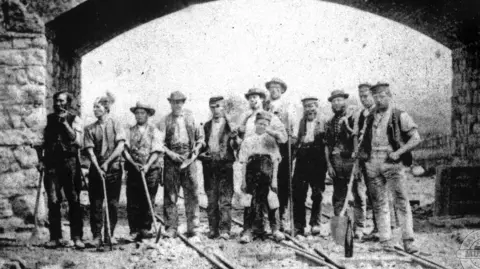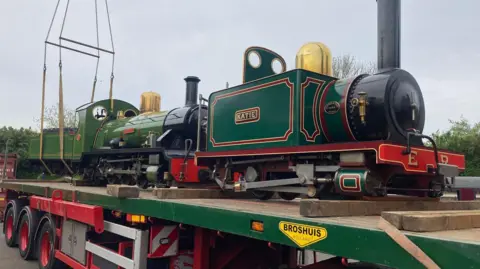Celebrating 150 years of 'La'al Ratty'
 Charlotte Graham Photography
Charlotte Graham PhotographyA narrow-gauge heritage railway line beloved of Lake District tourists, walkers and train enthusiasts is celebrating its 150th anniversary.
The Ravenglass and Eskdale Railway - known by locals as La'al Ratty, meaning little railway in Cumbrian dialect - was originally built to transport iron ore from hillside mines above Boot and down to the coast.
It later opened to passenger traffic and is now a tourist attraction with its own museum, which is hosting a special event to mark the milestone.
The museum's manager said the line was "woven into the fabric of the local landscape of west Cumbria".
The line, originally in the narrow gauge of 3ft (914mm) between the rails, was built to transport iron ore mined in the hills above Boot down to Ravenglass.
It was commercially opened on the 24 May 1875, and opened to passenger traffic a year later.
 Ravenglass Railway Museum Archive
Ravenglass Railway Museum ArchiveIn 1913, it closed due to diminishing quantities of iron ore and falling passenger numbers.
However, two years later, it was acquired by miniature railway engineers and prolific model makers WJ Bassett-Lowke and R Proctor-Mitchell, as a base for testing their little locomotives.
These engines ran to a smaller 15in (381mm) gauge and so a narrower line was laid along the route.
Wainwright's walks
In the 1920s, local quarrying recommenced close to the line, and it was used to transport granite, with ownership transferred to the Keswick Granite Company.
This ceased operation in 1953 and the line - still also used by passengers - was eventually offered for sale.
When it came up for auction in 1960, locals and enthusiasts came together to try to save it and managed to place the winning bid.
However, insufficient funds had been raised, and the balance of the purchase price was put up by Midlands stockbroker Colin Gilbert and local landowner Sir Wavell Wakefield MP.
The Ravenglass & Eskdale Railway Preservation Society was formed "for the purpose of preserving the railway, which is a continuing function until the railway can run no more".
It is now a thriving visitor attraction, and in 2007 a new station and visitor centre was opened at the Dalegarth for Boot terminus.
 Ravenglass Railway Museum Archive
Ravenglass Railway Museum ArchiveEspecially popular with families, it also attracts railway enthusiasts from all over the world, and two locomotives in the museum act as "ambassadors", travelling to events around the UK.
It is also used by walkers to access the wider areas at either end of the valley.
Seven intermediate station stops where it links to walking routes were documented by Alfred Wainwright in his 1978 publication, Walks from Ratty.
The anniversary is being marked by events including a specially chartered train, a guided walk, visiting locomotives and behind-the-scenes experiences.
 Charlotte Graham Photography
Charlotte Graham PhotographyNarrow-gauge railways, as their name suggests, are railways where the tracks are closer than a standard railway.
Claire Winter-Moore, manager of Ravenglass Railway Museum, said: "This little railway is woven into the fabric of the landscape of west Cumbria - not only physically but also in terms of its history and what it means to the local community and the team of people involved in it.
"From something that was initially created to serve industry, its purpose is now as a much loved visitor attraction, delighting families and railway enthusiasts alike.
"As we celebrate the 150th anniversary, the railway is looking forward to delighting more visitors for many years to come."
